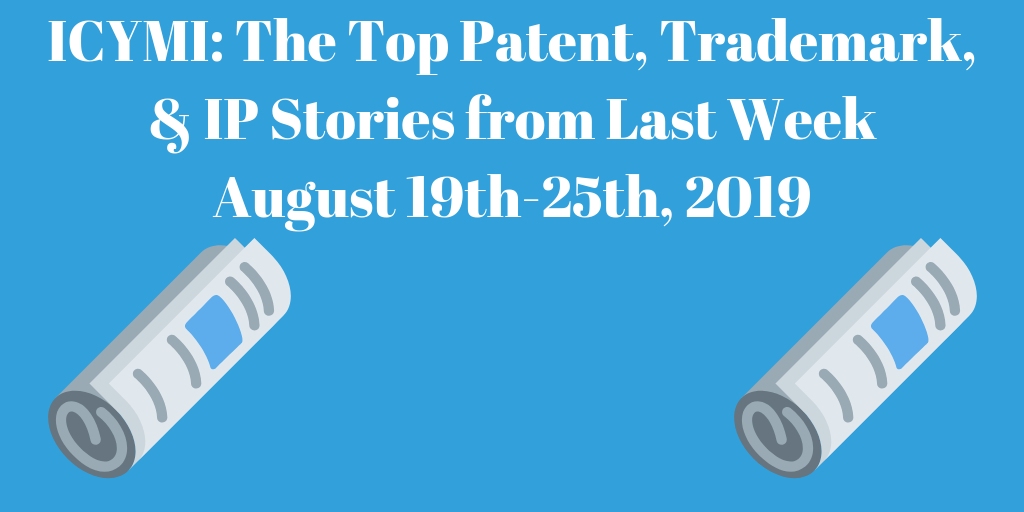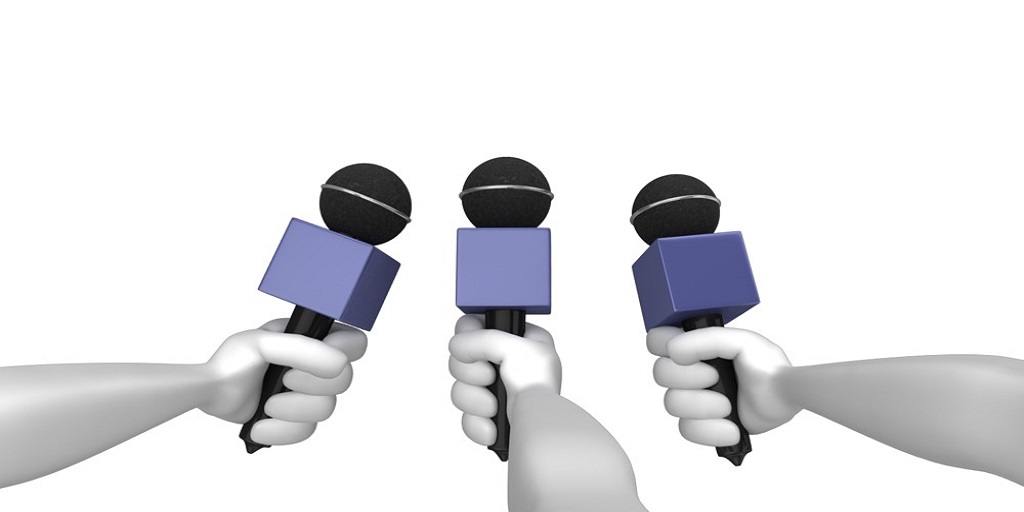Top Patent, Trademark, and IP Stories from Last Week (8/19-8/25/19)
Every week, we will be highlighting the top patent, copyright, trademark, intellectual property, etc. stories of the previous week in our “In Case You Missed It” segment. The list itself is in no particular order and includes a wide range of stories from the patent world that are informative, noteworthy, or just plain bizarre. The stories included encompass everything from Supreme Court cases to insights into growing industries. Please feel free to comment your thoughts on the stories or share an important one we missed!
“Tom Brady Is No ‘Tom Terrific.’ Any New Yorker Can Tell You That.”
Last week, the USPTO denied Tom Brady’s trademark application for “TOM TERRIFIC,” ruling it “may falsely suggest a connection with Tom Seaver,” who shares the same nickname. The filing did not come without controversy as sports fans, Mets fans in particular, felt Brady was stealing the nickname of the Hall of Fame pitcher for himself. Ironically, the USPTO felt the same way.
In their dismissal of the mark, the USPTO cited both “Section 2(a) – False Connection” and “Section 2(c) – Name of Living Individual” as reasons for their denial. Section 2(a) refuses trademarks that “consists of or comprises immoral, deceptive, or scandalous matter; or matter which may disparage or falsely suggest a connection with persons, living or dead, institutions, beliefs, or national symbols, or bring them into contempt, or disrepute.” In its reasoning, the USPTO felt “although Tom Seaver is not connected with the goods provided by applicant under the applied-for mark, Tom Seaver is so well-known that consumers would presume a connection.”Additionally, the agency felt “consumers will falsely associate applicant’s mark with Tom Seaver.”
Section 2(c) refuses marks that “consists of or comprises a name, portrait, or signature identifying a particular living individual except by his written consent.” That said, the USPTO ruled that “TOM TERRIFIC” points “uniquely and unmistakably” to Tom Seaver. In doing so, the public would assume a connection between “TOM TERRIFIC” and Tom Seaver on products sold using Brady’s mark. Given there is no consent by Seaver to allow this, the mark is rightfully denied.
Although the application was rejected, the USPTO indicates the rejection can be withdrawn if Brady submits a statement indicating “TOM TERRIFIC” is the nickname associated with Tom Seaver. From there, Brady would need the written consent of Tom Seaver to use his nickname in order to register. To read more about this story, click here (via New York Times, August 23rd, 2019).
“New Hampshire Court to Patent Troll: It’s Not Libel When Someone Calls You A ‘Patent Troll”
In 2013, patent lawyer Bob Stier referred to the company suing his clients for infringement, Automated Transactions Limited (ATL), as “patent trolls” in an interview. Stier then proceeded to repeat the statement on his website. In 2016, ATL proceeded to sue the lawyer and other groups that labeled them as “patent trolls” for defamation.
ATL argued “troll,” “shakedown,” and “extortion” were defamatory in nature. In the case, “patent troll” was defined as “a class of patent owners who do not provide end products or services themselves, but who do demand royalties as a price for authorizing the work of others.” The case proceed to the New Hampshire Supreme Court.
In their opinion, the court found “patent troll” was not defamatory but rather opinion and an “assertion that, among other things, ATL is a patent troll because its patent-enforcement activity is ‘aggressive.’ This statement cannot be objectively verified.” To read more about this story, click here (via BoingBoing, August 19th, 2019).
“Bank of America Seeks to Patent Crypto Wallet That Works Like Valet Car Key”
A new blockchain patent from Bank of America outlines a cryptocurrency wallet that partitions the wallet’s contents into different tiers of access. This would allow the wallet owner to grant access for a certain amount of the wallet to a specified user while keeping the rest of the contents out of reach. By requiring passwords for different tiers and compartments of the wallet, users can ensure the contents of their wallets are secure.
The patent is another testament to the bank’s increasing attention to blockchain and cryptocurrency technology. In March, Bank of America led all banks in total number of blockchain related patent filings with 82 and that number has only grown. Banks and others in the financial industry have led other sectors in blockchain patent filings as a way to increase security and streamline processes at a lower cost. To read more about this story, click here (via CoinDesk, August 19th, 2019).
“Facebook Invents a Fingertip Wearable Camera for Use With Broadcasting Live Video to a User’s Facebook Page”
A recent patent filing from Facebook outlines a series of wireless cameras worn on the fingers of users broadcasting on Facebook Live. The camera feeds would be synched together and either presented separately or stitched together as one. Such technology, Facebook writes, would enable users to broadcast perspectives from different angles. “The cameras may, but need not necessarily, be pointed in different directions or otherwise capture different, possibly non-overlapping, fields of view (FOVs)while they are recording,” the patent states.

Different hand gestures from the user could also control aspects of the recording. For example, a particular hand gesture such as a wave or a finger twirl could turn the camera off, start a live broadcast, zoom in or out, play advertisements, give shoutouts, etc. Such customization would enable users to get creative in their broadcasts and go beyond the conventional point-and-shoot broadcasts. To read more about this story, click here (via Patently Apple, August 20th, 2019)




